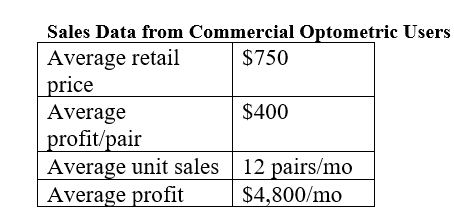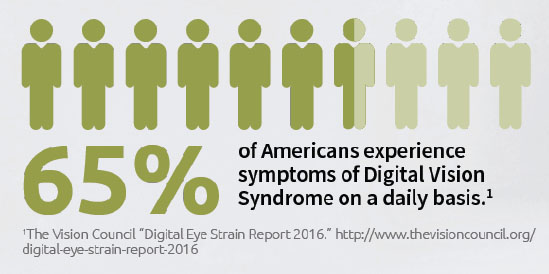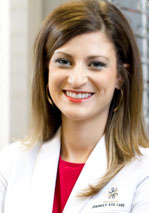Sponsored Content

By Jaclyn Munson, OD, FAAO
August 7, 2019
Differentiation is critical for an optometric practice to flourish. Over the past few years, we have re-focused our optometry practice to be patient experience-centric and wellness-centered. In this process, we added technology that enables us to deliver expanded optometric services and enhanced care.
We have unified the practice into three areas: Preventative care; the Vision Performance Center of Fort Collins; and the EyeSpa. All three of these profit centers feature state-of-the-art technology and a team of wellness heroes who are courageous with process improvements on a daily basis. Our focus across all three areas is to protect a culture of wellness and prevention and to shine light on the root cause of potential problems more accurately and efficiently.
 To that end, every patient who comes to Fort Collins Family Eye Care is asked to complete a series of surveys, such as a nutrition survey, a revised Standard Patient Evaluation of Eye Dryness (SPEED) questionnaire and a neurolens Lifestyle Index questionnaire (eyeBrain Medical, Inc.) that asks about eye strain, headaches, neck pain and other symptoms. Their responses determine which tests will be performed when they arrive, and whether they will be referred internally for more in-depth evaluations at the Vision Performance Center or the EyeSpa.
To that end, every patient who comes to Fort Collins Family Eye Care is asked to complete a series of surveys, such as a nutrition survey, a revised Standard Patient Evaluation of Eye Dryness (SPEED) questionnaire and a neurolens Lifestyle Index questionnaire (eyeBrain Medical, Inc.) that asks about eye strain, headaches, neck pain and other symptoms. Their responses determine which tests will be performed when they arrive, and whether they will be referred internally for more in-depth evaluations at the Vision Performance Center or the EyeSpa.
Patients with a high SPEED score, for example, will be exposed to osmolarity and meibography testing to evaluate the structure and function of their anatomy. Those with more than three symptoms on the neurolens Lifestyle Index (and all patients under age 18) will be measured with the neurolens Measurement Device. This cutting-edge eye-tracking device can accurately and objectively measure the degree of eye misalignment at distance and near, while assessing elements of ocular fusion that are not identified in a typical eye examination.
Role of Technology
Technology continues to play a role in treatment in all three practice areas. For example, patients who have been identified through our screening and diagnostic process as having dry eye or meibomian gland dysfunction can come to the EyeSpa for advanced LipiView II meibomian gland imaging (Johnson & Johnson Vision), vision break-up assessment (Visiometrics), BlephEx (Rysurg) biofilm removal and Pellevé (Cynosure) radio frequency treatment of the meibomian glands and collagen production around the delicate skin around the eyes.
 The neurolens Measurement Device helps to speed up the dry eye diagnosis process because it helps us distinguish between pseudo or phantom dry eye and true ocular surface disease (trigeminal dysphoria vs ocular surface disease). Symptoms of late-day discomfort and eye strain are common to both dry eye and other conditions. In the peaceful retreat of the EyeSpa, we also provide a range of skin care, eye nutrition, brow and lash treatments.
The neurolens Measurement Device helps to speed up the dry eye diagnosis process because it helps us distinguish between pseudo or phantom dry eye and true ocular surface disease (trigeminal dysphoria vs ocular surface disease). Symptoms of late-day discomfort and eye strain are common to both dry eye and other conditions. In the peaceful retreat of the EyeSpa, we also provide a range of skin care, eye nutrition, brow and lash treatments.
In the preventative primary care practice, I often prescribe therapeutic neurolenses® to address the patients’ calculated visual misalignments. What makes neurolenses® unique is that they are the first and only prescription lenses that add a contoured prism to address binocular misalignment at all distances. Contoured prism has been found in studies to relieve the headaches, neck/shoulder pain and eye strain that many people experience when using digital devices, reading or doing other near tasks.
When the eyes are not aligned, the visual system works constantly to compensate for the misalignment, overstimulating the trigeminal nerve. This can cause eye strain, headaches, neck pain and other symptoms known collectively as trigeminal dysphoria.
While digital eye strain and asthenopic symptoms may be multifactorial and arise for multiple reasons, we have found that if these symptoms are resulting from the detected visual misalignments and are leading to trigeminal dysphoria, correcting the visual misalignments at all distances with the neurolens contoured prism is a highly effective solution. In one study, 93 percent of people who purchased neurolenses reported a reduction in symptoms.2
Finally, in the Vision Performance Center, where we offer vision therapy, vision rehabilitation and sports vision expertise, we rely on several different technologies to evaluate the functional skills needed for optimal visual performance. These include eye tracking, teaming, depth perception, eye-hand coordination, reading comprehension and other important visual processing skills.
Objectively identifying and treating minor eye misalignments with customized contoured prism lens technology has been a shot of adrenaline for the Vision Performance Center, even when the patient has other problems that may still require vision therapy. Correcting the misalignment makes our vision performance outcomes more efficient and effective, reducing our timelines by approximately 30-40 days.
Alignment of Staff
I have been fortunate to learn from mentors how critical it is to define my mission statement, hire for that mission, and to defend the culture of the practice every day. A staff member with a “widget mindset” of only doing x, y and z tasks, or only operating certain pieces of equipment, just wouldn’t fit our practice culture.
We operate with a small staff, all of whom are cross-trained to support all three business centers. This ties back to the general practice philosophy of integrating health care with a preventive mindset. Every person on our team knows that we see the patient’s vision, ocular health and symptoms as a complete picture. So, while each person may have some areas of expertise, we are all attuned to the uses of the technologies in the clinic and, more importantly, how to educate patients about health and wellness.
This approach has made us much more efficient, which is key. We are able to achieve resolution of mild-to-moderate OSD or trigeminal dysphoria in 30-60 days and resolution of moderate-to-severe OSD or trigeminal dysphoria in 90 days.
Return on Investment
It is important to measure the financial impact of any technology investment. In my practice, the neurolens Measurement Device paid for itself. In just six months, we yielded over $40,000 profit in lens materials, not including profit from eyewear frame selection and follow-up evaluations billed to most medical insurances. Revenues and profits have been in line with or exceeded expectations based on national data (Table 1).
Evaluation and treatment of eye misalignment has increased the practice’s capture rates. The therapeutic effects of neurolens, for example, are exclusive to private practice. Our level of expertise and quality control distinguishes us from online retailers and others offering only basic eyewear.
More important, though, has been the impact of our approach and our technology on patient satisfaction and referrals. More than 50 percent of our daily patients are symptomatic and potential neurolens candidates.
The call to action for my patients is to advocate for others in the community who may suffer from similar symptoms. I personally ask them to empower those circles of colleagues who are like-minded in preventative care with the knowledge they’ve learned and the experience they’ve witnessed.
For that reason, I think the investments we have made in advanced technology and the time we spend to thoroughly screen and evaluate patients is well worth it. Not only do some of these technologies instantly generate revenue, but they elevate the level of care we strive to provide with our commitment to wellness and visual performance.
References
1. The Vision Council. Digital Eye Strain Report 2016. http://www.thevisioncouncil.org/digita-eye-strain-report-2016.
2. Survey of 360 neurolens patients after 45 days of treatment. Data on file, eyeBrain Medical.
 Jaclyn Munson, OD, FAAO, practices at Fort Collins Family Eye Care in Fort Collins, Colo. She is the founder of Colorado’s Dry Eye Society. She is a consultant to Oasis Medical and eyeBrain Medical. To contact her: fcfamilyeyecare@gmail.com.
Jaclyn Munson, OD, FAAO, practices at Fort Collins Family Eye Care in Fort Collins, Colo. She is the founder of Colorado’s Dry Eye Society. She is a consultant to Oasis Medical and eyeBrain Medical. To contact her: fcfamilyeyecare@gmail.com.

























